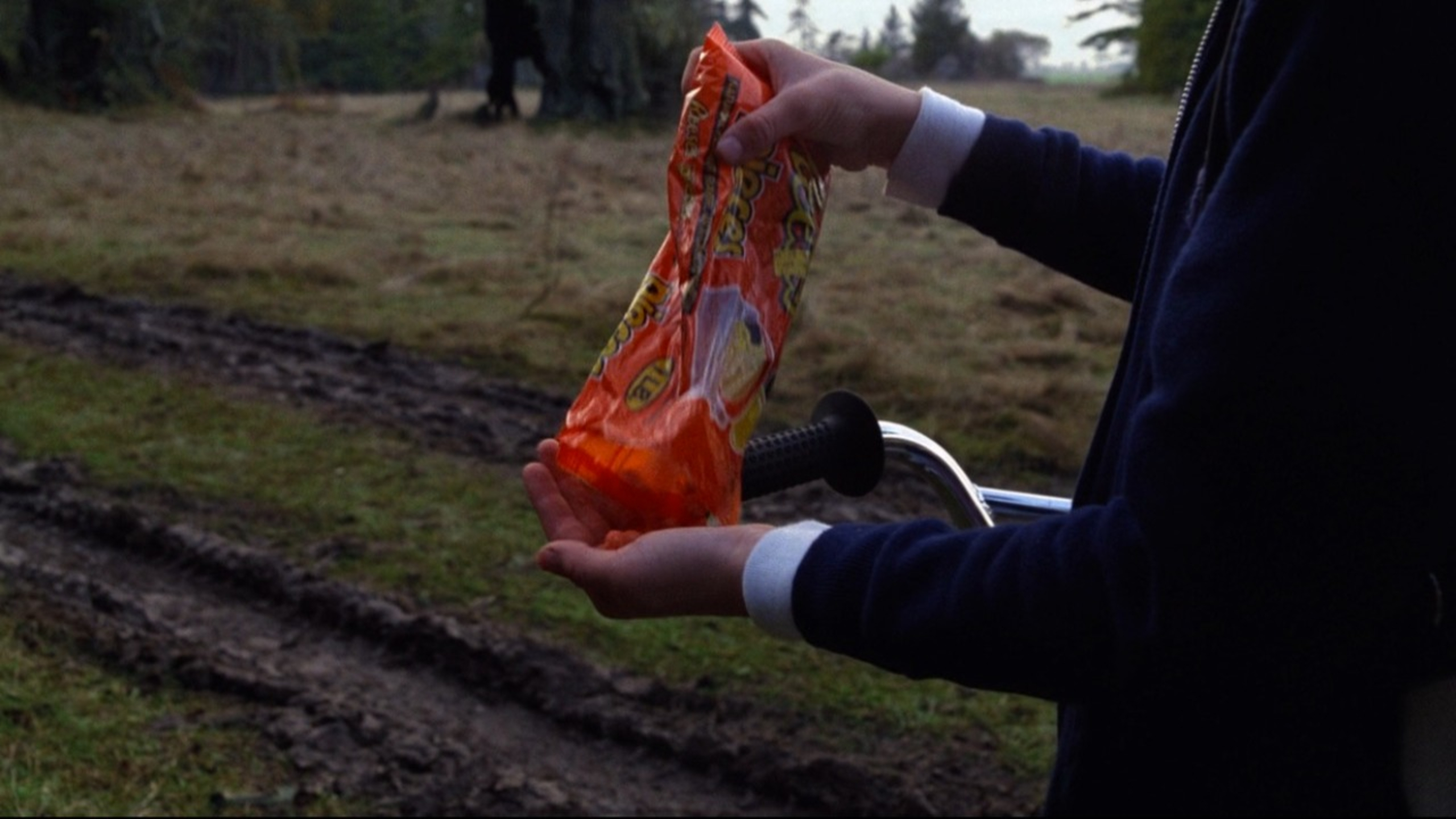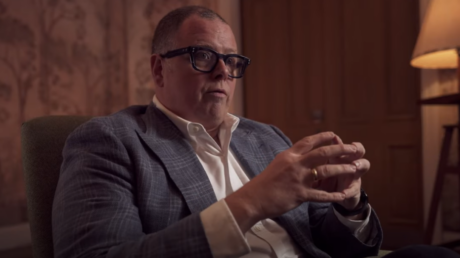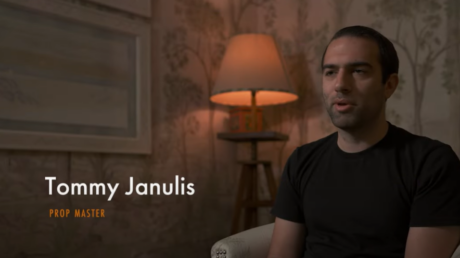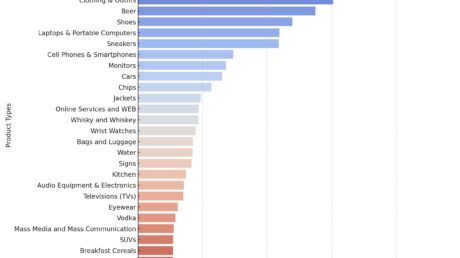One Of The Most Important Tools In The Advertising Industry
Hershey’s, Reese’s, Pizza Hut, or Rolex, we all know and love our everyday brands. Well…if Rolex is one of your “everyday brands”, I would like to congratulate you, for now, I am stuck in the Pizza Hut section. As marketers, we must ask ourselves, how do consumers make their purchasing decisions, and how can we influence them through media?
The tool of product placement did not develop into a multi-billion dollar industry during the last half century without a reason. Starting in black and white, already in the early beginnings of the evolution of film, a whole new spectrum of advertisement found its path into the consumers´ minds: featuring brands and products in the limelight of movies and TV shows. In this blog, Hollywood Branded discusses the evolution and the immense impact that product placement has had on the entertainment industry.
Our Daily Influence
According to experts, the assumed number of advertising messages that each of us is confronted with each day reaches from 10,000 up to 13,000 unconscious impressions. This means that every single one of us is being influenced, if not even manipulated on a daily bases by the billion industry of advertisement. Luckily, our subconscious is able to evaluate information in a reflected way, which means you don’t have to worry- concerns that hidden advertising could manipulate you against your will and conviction are unfounded on this basis. No strict non-smoker can be encouraged to smoke through advertisements, regardless of the power that our subconscious has on our decisions.
How It All Started
With the evolution of film, a whole new spectrum of advertisement found its path into the consumers’ minds: Product Placement. Putting brands and products in the limelight of movies and series is every brand ambassador’s dream. The response showed effects: already in 1927, the movie Wings was elected the first Academy Award-winning film to feature product placement, through several shots of a chocolate brand we all know and love… Hershey’s chocolate bars!
Now, of course, this success was only the first milestone of the candy companies’ use of product placement. In the 1980s the company´s enormous investment of 1,000,000 dollars rewarded Hershey’s sub-company Reese’s with double sales of their peanut butter sweets after the candy was featured in the iconic movie E.T. the Extra-Terrestrial. Fun fact: Steven Spielberg’s original choice for the snack was M&M’s, but the CEO of their parent company, Mars, ultimately didn’t accept the offer. They probably didn’t see the ROI potential at the time; I wonder if they regret it now!
How Product Placement Affects Our Psyche
Though many researchers tend to put focus on explicit cognitive memory effects, they are usually hardly relevant to our final purchase decision. What is a lot more important concerning our day-to-day decisions is the subconscious, that influences our purchase behaviour more effectively than f.e. the concrete memory of James Bond drinking a Heineken in Skyfall. The companies and filmmakers, not just the consumers, can benefit from the possible uses of this form of advertising. Product Placement provides an additional marketing channel that can lead to a more realistic film experience and cover production costs, which in turn promotes culture, leads to better films and keeps box office prices reasonably low. At the same time, it is the responsibility of the producers to ensure the quality and the appropriate degree of artistic freedom maintained: Product Placement should complete and support the film, it should not be what makes the film. If the consumer gets the impression that a film is produced for the use of product placement, the movie automatically leaves a worse impression on the subconscious of the viewer.
Bold or Brash? – Some Not-So Decent Product Placements
Over the years, product placements have become more and more sophisticated, as the monetary value of advertising has skyrocketed. To this day, the biggest company giants fight for their product placement in the next big blockbuster. Now, the best kind of product placement is the one that is almost unnoticeable, one that simply becomes part of the film. Though some productions decided to go all in and basically rub it in the viewers face in an almost absurd way. Think of Transformers: Age of Extinction. Stanley Tucci somewhat becomes the brand representative of Beats by mastering the overt feature of the speaker, which even won an award for its chunky brand synergies.
Throughout the whole movie, there are absurd references to Victoria’s Secret and, all in all, the record-breaking number of 55 other brands. Just imagine the amount of money that went into this production.
Even nonsensical Adam Sandler movies can’t get enough of product placement. Jack and Jill is not only record-breaking (the film won a record-breaking 10 Razzies and was nominated for 12), he also manages to squeeze a whopping 6 Coca-Cola logos into the picture in one scene. When Al Pacino ends up appearing in a fake commercial promoting the Dunkaccino for Dunkin’ Donuts, one can only speak of a parody of an exaggerated product placement.
Daniel Craig As The Advocate For Product Placement
The term product placement is definitely nothing new to the James Bond chronicles. From cars to suits to technical equipment, the brands used are by no means hidden. Heineken invested 24 million euros in the blockbuster Skyfall released in 2012 in order to be sold as Bond’s favourite drink. “You could not do these kinds of films if you didn’t have these sponsors,” explained Daniel Craig. According to the film star, product placements are “vital” in order to be able to guarantee the quality of major films.
His leading role in Casino Royale in 2006 was generously financed by various brands, and led to what is probably the most notorious product placement of the Bond films: In one of the opening scenes, Craig’s Co-actress Eva Green remarks how Craig is the type of person who is “former SAS guys who always have a slight smile and wear expensive watches.” With a cheeky glance at his wrist, she asks “Rolex?” and he replies, “Omega.” Vesper replies that the watch is “beautiful”, this scene might as well be copied out of a commercial.
The Three Types Of Product Placement
Throughout the evolution of product placement, three main ways of featuring brands and products in film developed. We can understand them best by looking at three examples; two of them have already been mentioned.
Let’s go back to Stanley Tucci representing the Beats speaker in the fourth Transformers film. Here, the director Michael Bay uses the Screen Placement strategy. This means that the product is not mentioned by name (Tucci just calls it “the pill”), but it is dedicated a decent amount of screen time.
While Screen Placement does not distinctly mention the brands´ name, Script Placement literally includes the products use and name in the script, and calls it out by a character. Coming back to our Product Placement ambassador: the James Bond Chronicles basically embody our third category: Plot Placement. Here, products have a steady relationship to the characters, just like the Aston Martin cars being a huge part of the Bond franchise.
What’s Important To Remember
Daniel Craig once said “As a kid, I kind of spent my life being amazed by being tricked. I love being tricked. I still love it today.” Today he recognizes the “vital” importance of product placements in order to be able to guarantee the high-end production of major films. Yes, in some aspects the psychology behind this marketing strategy involves “tricking” the consumers´ minds, but that doesn’t mean something negative. Product Placement is used to make the movie experience more real life: it connects actors with products we know, creating its own reality. Production costs are being reduced, ensuring us the quality we want: a win-win, I’d say.
Originally printed by Hollywood Brande, written by Hannah Weiss




